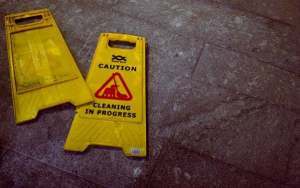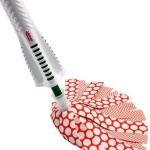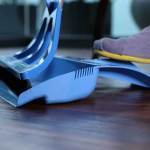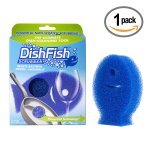Don’t Forget to Spring Clean Your Cleaning Tools
 The right tools make any job easier and that’s especially true when it comes to cleaning. But are you trying to clean with dirty cleaning tools? Or cleaning tools that are in need of repair or replacement?
The right tools make any job easier and that’s especially true when it comes to cleaning. But are you trying to clean with dirty cleaning tools? Or cleaning tools that are in need of repair or replacement?
What’s in your cleaning closet?
Take a look at what’s in your cleaning closet or wherever you keep your cleaning tools and supplies. Is your vacuum cleaner in good working order? Is your broom or mop head worn out?
Make a note to repair or replace cleaning tools or purchase replacement accessories as needed. Remove any tools that are broken or no longer needed. If they’re still in working order, donate to your favorite local charity or offer them on your local Buy Nothing group on Facebook or Freecycle community.
How to clean your cleaning tools
After decluttering your cleaning closet, here’s how to clean your cleaning tools…
Broom – Vacuum bristles. Wash in soapy water and rinse. Stand with bristles up to dry.
Mop – I toss my microfiber mop head in the washing machine along with my microfiber cloths. If you have a sponge-type mop head, dunk it in a bucket of warm water with a few drops of dishwashing liquid. Use your hands to squeeze the suds through the sponge. Empty the bucket and refill with fresh water. Keep squeezing water through the sponge to remove suds. Rinse under running water to remove the last of the suds. Allow to air dry thoroughly before returning to your cleaning closet. Replace sponge mop heads every few months.
Vacuum cleaner – Empty the bag or canister if it’s more than two-thirds full. Wipe the outside of your vacuum cleaner and cord with a damp, soft cloth. Remove bits of thread, hair, and other debris from the roller brush – scissors may be needed. Remove the air filter and wash in hot, soapy water and then rinse and air dry completely before replacing it your machine. This should actually be done monthly.
Microfiber cloths – Machine wash microfiber cloths in hot water with a little detergent and dry on the delicate cycle or air dry. Do not wash microfiber with any other fabrics as lint will become trapped in the microfiber and lessen its effectiveness. Do not use fabric softener. When properly cared for, microfiber cloths should last for approximately 50 washings.
A few of my favorite cleaning tools
While we’re on the subject of cleaning tools, I thought I’d share a few of my new and old favorites.
 For mopping, most professional house cleaners use a string mop. Why? Because using a swabbing motion with a string mop, you can cover more floor faster than with a sponge mop head. And it won’t leave streaks. I’m a big fan of the Libman Wonder Mop. It’s like a string mop except that instead of strings, it’s got strips of microfiber fabric. Microfiber is so effective at removing dirt and germs, all you need is water to get your floors squeaky clean.
For mopping, most professional house cleaners use a string mop. Why? Because using a swabbing motion with a string mop, you can cover more floor faster than with a sponge mop head. And it won’t leave streaks. I’m a big fan of the Libman Wonder Mop. It’s like a string mop except that instead of strings, it’s got strips of microfiber fabric. Microfiber is so effective at removing dirt and germs, all you need is water to get your floors squeaky clean.
 I recently replaced my worn-out broom after watching Shark Tank one night. The inventor of The Wisp was on the program and I knew right away that this was the broom for me. I love it when I’m right! This broom is the best broom I’ve ever used. With my old broom, I could see a lot of dust in the air while sweeping, which would eventually settle back on the floor. Not so with The Wisp. And it does a great job of trapping cat hair (and human hair).
I recently replaced my worn-out broom after watching Shark Tank one night. The inventor of The Wisp was on the program and I knew right away that this was the broom for me. I love it when I’m right! This broom is the best broom I’ve ever used. With my old broom, I could see a lot of dust in the air while sweeping, which would eventually settle back on the floor. Not so with The Wisp. And it does a great job of trapping cat hair (and human hair).
But wait until you see what’s different about the dust pan works. You place it on the floor and step on the back which makes the front edge hug the floor. So when you sweep debris into the dust pan, you don’t have to chase that line of dirt that most dust pans leave behind. There’s even a serrated edge on each side of the dust pan designed for cleaning the bristles after use. The catch? Well, it costs more than a regular broom, but I think you’ll agree after using it, that it’s worth every penny because it comes with a lifetime warranty on the bristles. So it may very well be the last broom you’ll ever need to buy!
 In a recent blog post, I warned you about using germ-y sponges. Then I was introduced to DishFish sponges. Most sponges stay wet after cleaning, becoming a breeding ground for bacteria and odors. DishFish sponges are designed to stand up on their tails, so they dry faster. And these sponges are made from specialized polyurethane foam infused with an antimicrobial, a material that reduces the spread of E. Coli by up to 90%. Bottom line: The DishFish only has to be replaced every 6 to 12 weeks vs. 1 to 2 weeks with other sponges.
In a recent blog post, I warned you about using germ-y sponges. Then I was introduced to DishFish sponges. Most sponges stay wet after cleaning, becoming a breeding ground for bacteria and odors. DishFish sponges are designed to stand up on their tails, so they dry faster. And these sponges are made from specialized polyurethane foam infused with an antimicrobial, a material that reduces the spread of E. Coli by up to 90%. Bottom line: The DishFish only has to be replaced every 6 to 12 weeks vs. 1 to 2 weeks with other sponges.
Whether you are just starting your spring cleaning or just starting to think about it, don’t forget to clean your cleaning tools! And keep them clean for a healthier home.
The post Don’t Forget to Spring Clean Your Cleaning Tools appeared first on Declutter Your Life with Donna Smallin Kuper.
The One-Minute Organizer Blog
- Donna Smallin Kuper's profile
- 45 followers



